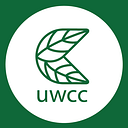Food Waste and Composting
By Jeffray Behr
Globally, we grow enough food to feed over 10 billion people. There are just over 7 billion people on Earth, but 1 in 9 people are undernourished [1]. Food, you know, that thing that every living being needs to survive? Well, we waste a lot of it. Canadians waste more than 6 million tonnes every year — over 400 pounds per person [2]. 47% of the total waste comes from homes which amounts to $1,456 per household each year [3]. Total food waste is estimated to cost Canada $31 billion annually [4].
Approximately 30% of all fruits and vegetables grown in Canada don’t ever make it to stores since they are not “visually appealing” enough for consumers [5]. I don’t know about you, but I don’t go on dates with my food. To combat this, Intermarché, the 3rd largest supermarket chain in France, launched the “Inglorious fruits and vegetables” program (find out more here). The idea is that subpar produce is sold right beside regular produce but is 30% cheaper and they are also made into soups and juices to show that they are still good to eat [6].
Grocery stores and restaurants throw out a lot of food just because it’s “expired”. However, most “expired” food is still safe to eat [7]. There are no regulations or guidelines for these dates and they are based upon the discretion of the manufacturer, who is likely to make it sooner rather than later so that you throw it out and buy more. Grocery stores and restaurants rarely give “expired” food to food banks, even though they are legally not liable for any damages it may cause and are actually protected under the Donation of Food Act [8]. All of this happens while 850,000 people rely on food banks in Canada [9].
What happens to our food waste? Well, 25% to 65% of items (depending on the region) in the garbage are compostable [10]. If it’s biodegradable, it’ll break down the same whether it’s composted or put in a landfill, right? Wrong, items that would break down in a month if composted, take years (even decades) in a landfill. When compostable items are put in landfills they are suffocated by all of the surrounding waste depriving them of oxygen which is required for proper decomposition. Due to this lack of oxygen, compostable items undergo anaerobic decomposition instead. This type decomposition produces methane which is 25 times more harmful to global warming than carbon dioxide [11]. About 20% of all methane produced comes from landfills (which is equivalent to 117 million metric tonnes of carbon dioxide each year) [12].
Enough with the statistics, you want action. Here is what you can do:
- Buy less food (don’t fall for the multi-item deals or buy in bulk).
- Buy locally grown food and select “ugly” looking fruits and vegetables.
- Don’t throw out food just because it’s a few days past the “expiration date”.
- Store your leftovers and remember to eat them.
- Reorganize your fridge and cupboards to ensure that you use what is oldest first.
- Grow your own food (it’s easier than you think)
- Donate any surplus food you have to food banks
- Compost your waste (only 60% of Canadian households participate in composting programs or do their own composting) [13]
Remember that every time you throw a compostable item in the garbage, it goes to a landfill to produce methane which damages the ozone layer and contributes to the food waste problem. This encourages producers to produce more food to compensate for all of the wasted food, of which about 40% will get thrown out. This cycle of ever growing food waste will continue, all the while, nearly a billion people will go to sleep tonight hungry.
References
[1] Roser, M. and Ritchie, H. (2018). “Hunger and Undernourishment”. Retrieved from https://ourworldindata.org/hunger-and-undernourishment
[2] “Food in Canada”. (December 8, 2016). Retrieved from http://www.statcan.gc.ca/pub/16-201-x/2009000/part-partie1-eng.htm
[3] Martin, R. (2012). “Extensive Land Use to Sustain Agriculture”. Paper Presented at the Canadian Agricultural Economics Annual Meeting, Niagara Falls, ON.
[4] Gooch, M., Felfel, A., & Glasbey, C. (December 2014). “Food Waste in Canada — $27 Billion Revisited”. Retrieved from http://vcm-international.com/new-report-annual-food-waste-in-canada-is-31-billion/
[5] Royte, E. (October 13, 2014). “One-Third of Food Is Lost or Wasted: What Can Be Done”. Retrieved from https://news.nationalgeographic.com/news/2014/10/141013-food-waste-national-security-environment-science-ngfood/
[6] Godoy, M. (December 9, 2014). “In Europe, Ugly Sells In The Produce Aisle”. Retrieved from https://www.npr.org/sections/thesalt/2014/12/09/369613561/in-europe-ugly-sells-in-the-produce-aisle
[7] Cakir, C. (June 30, 2015). “The Surprising Truth About the Dates on Food Labels”. Retrieved from http://www.health.com/food/the-surprising-truth-about-the-dates-on-food-labels
[8] Goldberg, E. (December 7, 2016). “Restaurants Officially Have No Excuse Not To Donate Leftover Food”. Retrieved from https://www.huffingtonpost.ca/entry/restaurants-that-dont-donate-because-of-liability-are-just-making-excuses-experts-say_us_577d6f92e4b0344d514dd20f
[9] Puddicombe, S. and Ireland, N. (November 15, 2016). “Food bank use on the rise in Canada, with ‘drastic’ surges in Nova Scotia, territories”. Retrieved from http://www.cbc.ca/news/canada/food-bank-report-2016-1.3850897
[10] “Waste Management with Compost”. (2017). Retrieved from https://www.the-compost-gardener.com/waste-management.html
[11] Environmental Commissioner of Ontario [ECO]. (2012). “Losing our Touch: Annual Report 2011/2012 Part 2”. Toronto: Environmental Commissioner of Ontario. Retrieved from http://www.eco.on.ca/index.php/en_US/pubs/annual-reports-and-supplements/losing-touch-part-2
[12] “Greenhouse Gas Emissions”. (March 21, 2013). Retrieved from https://www.epa.gov/ghgreporting/ghgrp-waste
[13] Mustapha, I. (November 27, 2015). “Composting by households in Canada”. Retrieved from http://www.statcan.gc.ca/pub/16-002-x/2013001/article/11848-eng.htm
